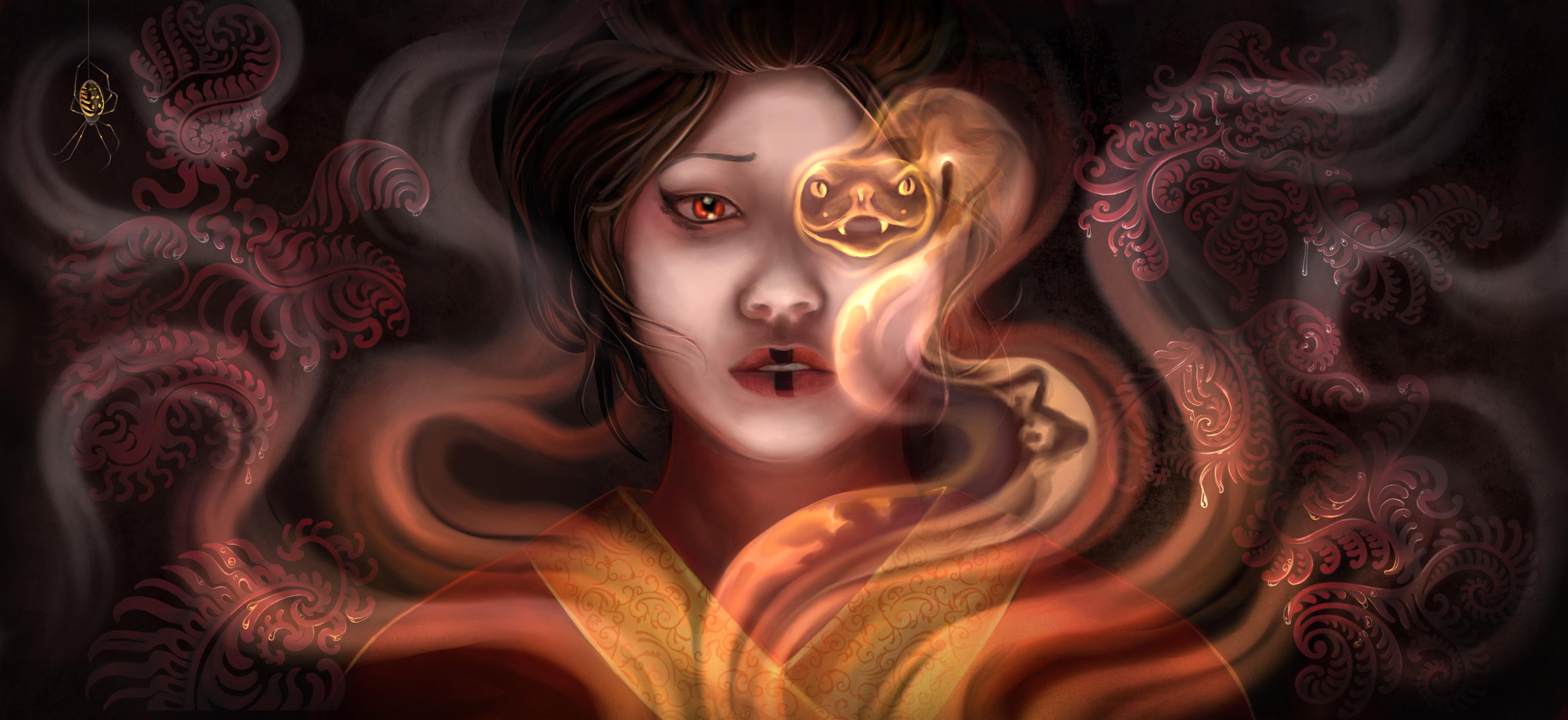CHRISTINE LI, NEW BOOK: "ABALONE AND THE SNAKE GODDESS" TO BE PUBLISHED MAY 1, 2020
Current: Christine Li new book: “Abalone and the Snake Goddess” will be published on May 1. 2020
The eBook can already be pre-ordered on most online platforms.
Until May 1, the book is available on Amazon for 3.99 euros.
CONVERSATION ABOUT HEALING
Nico:
Christine Li is known to many as the creator of the best-selling book “The Way of the Empress,” which she wrote in 2000 in collaboration with a friend. She is also one of the most successful doctors and body therapists I know.
In recent years, she has begun publishing novels about Abalone, a famous healer and shaman in ancient China. Her second novel, Abalone and the Snake Goddess, comes out May 1.
Since Christine is an old friend of mine, I’m going to quiz her a bit to mark the occasion of the book’s release. The secrets behind her overwhelming successes as a healer are sure to inspire our therapists and clients.
Of course, I also want to know how her healing work influences her books and how her books influence her work as a healer and teacher of the healing arts.
Christine:
Thank you for those kind words, Nico. Basically, I’ve known you as an enthusiastic masseur since you were a child. Already as a three-year-old dwarf, you “shaved” all of your mother’s friends with ardor: One of these friends was me, then a young doctor in Munich.
Even after you had established yourself in Zurich as THE address for medical massage, we kept running into each other.
Somehow our conversations almost always revolved around healing – the secrets of connective tissue, trauma therapy, fascia therapy, acupuncture, soul regression and trigger points. Then, after a few bottles of wine, the meaning of life was added. We’re already a little crazy about that.
Nico:
Do you need sound medical knowledge about function and anatomy or is intuition enough?
Christine:
I wouldn’t want to answer that question in general. Some people learn more from the head and want to understand everything that way. Other people are more synesthetic and empathic and start that way. Both are a good start. However, it is not enough. In the long run, both heart and head should be involved in the process.
You, Nico, already hit the right points intuitively as a child. You studied anatomy later, even several times and increasingly rigorously. With each of these trainings, your medical massages have become even more precise and targeted. It was a harmonious back and forth between head and heart.
Many masseurs, therapists and healers begin by studying anatomy and theory. They often have a much harder time starting the actual work on living people.
We doctors probably have it the hardest, because after years of theory we easily forget that we actually wanted to heal people. If we succeed in overcoming this hurdle, and our stuffed heads can get involved in feeling, we head people also get back into flow. But if I should absolutely commit myself to one thing: Without the head, it works halfway. Without heart, however, not at all.
Nico:
What are the skills that a really good therapist needs?
Christine:
Many thick books have been written about this, with good reason, especially in the psychotherapy scene. Every therapy modality has its own laws.
I would say it’s about finding a balance between two attitudes that I would call the “leaning in” and the “stepping back.”
By “leaning in,” I mean empathically empathizing with our patients, activating our mirror neurons, and ultimately feeling what they feel.
It would be conceivable that already in the near future a very good robot will be used in medical massage that fully understands anatomy and electromagnetic voltages. Nevertheless, I doubt that without the empathic “leaning in” a real breakthrough can be achieved on a spiritual level. And that is what deep fascia work, trigger point therapy or osteopathy is all about.
When “leaning in” we feel from the patient’s point of view. However, as we all know, you can’t pull yourself out of a quagmire by your own hair. If the patients are stuck in a blockade from which they cannot get out, we often help them better as outsiders. To do this, we step back. In “stepping back,” we become cool and objective.
We may say something the patient doesn’t like or work on trigger points that don’t feel comfortable. Here the head is allowed to show what it can do. Very emotional and frightened patients may benefit from their therapist keeping a clear head. Over-controlled people often thaw out when someone picks up on their subtle emotional signals and mirrors them, so they learn to feel better about themselves.
The art lies in balancing the two attitudes, the yin and the yang, fluidly adjusting from situation to situation.
Nico:
How can this art be learned?
Christine:
It’s a lifelong process. In the process, above all, we get to know ourselves better and put ourselves in order. We overcome our own traumas. I believe that whoever achieves this has mastered 90% of the training. A good and balanced person, with forbearance for one’s own weaknesses and quirks, is the best medicine.
Nico:
Why do you like to write books?
Christine:
In many years of practice as a doctor, healer and shaman around the globe, I have experienced and learned a lot. I would like to pass on these experiences. Also, I think words can be just as healing as hypnosis or body therapy. Words have a very special magic for me.
When my readers write me how much my stories have touched them or given them a new perspective on life, I am incredibly happy. Storytelling and massage are the most archaic forms of healing for me.
Nico:
What have you learned from working with people that now goes into your books?
Christine:
My trainings and practices in China, Tibet, the Ecuadorian Amazon and Germany, my shamanic work, my work as a hypnotist and body therapist, my being a mother – all these things have given me many inner images. What I specifically took from the body-therapist life is the way of looking into people’s souls, seeing their body language and physical sensations.
Some authors describe physical sensations in a very cliché way: not all people blush when they feel insecure or get cold feet when they are afraid. Each person has his or her own unique sensations and expressions. Culture, upbringing, constitution, and character all factor into these reactions.
I’m often told that my novels are very synesthetic. That is, you quickly hear, see, smell, and feel your way into the characters – even though they are, after all, people of ancient China and Vietnam, some of them members of ancient tribal cultures or magical creatures, all of whom think completely differently than we do. Feelings connect us where thoughts separate us.
Nico:
And conversely, did you gain any insights for your work with people while writing?
Christine:
After all, we all want a more beautiful and fulfilling life. We achieve this by rewriting our inner story. When I was writing, I practiced finding the right words and images for this.
These work both in reading and in body therapy. Words are always magical. Abalone is mute at the beginning of the novel series. Together with her, we can find our magic again.
Nico:
Thank you for this interview.
You can find out more about Christine and her books at www.christineli.de
Christine Li’s new book: “Abalone and the Snake Goddess” will be released on May 1. Pre-orderers can get it for 3,99 Euro until then.
Best entertainment for strong and spiritual humans, who “actually no novels read”.
The “Legend of Abalone” begins with the book “Abalone and the Snake Goddess”. We are immersed in the mystical story of a mute shaman in ancient China who has been fearfully hiding behind high walls for years.
Then loneliness seduces Abalone to risk a forbidden love spell. The nightly ritual activates the dark snake goddess. But this one does not like at all when strong women make themselves small.
It’s one of those rare books that I wanted to read from beginning to end without pause – without realizing that my stomach was growling hungrily or that it was already getting light outside. So much Abalone lives and loves that I devoured the last few pages very very slowly because I didn’t want it to end and Abalone to leave me.”
-author and blogger Mo Jour, Office of Unusual Measures“A magical dream, this story! Archaic wild, touches me deeply to my roots. I love it so much! Been ages since I read anything other than non-fiction. And now I’m diving…. Into this powerfully magical world. I’m blown away.”
Zurich entrepreneur and author Marianne Weiss, Oriental Sugaring.rocks
“Abalone and the Snake Goddess is also featured in a podcast. In Swiss. https://www.staywildgosweet.com/podcast/10-vollmond-und-abalone

